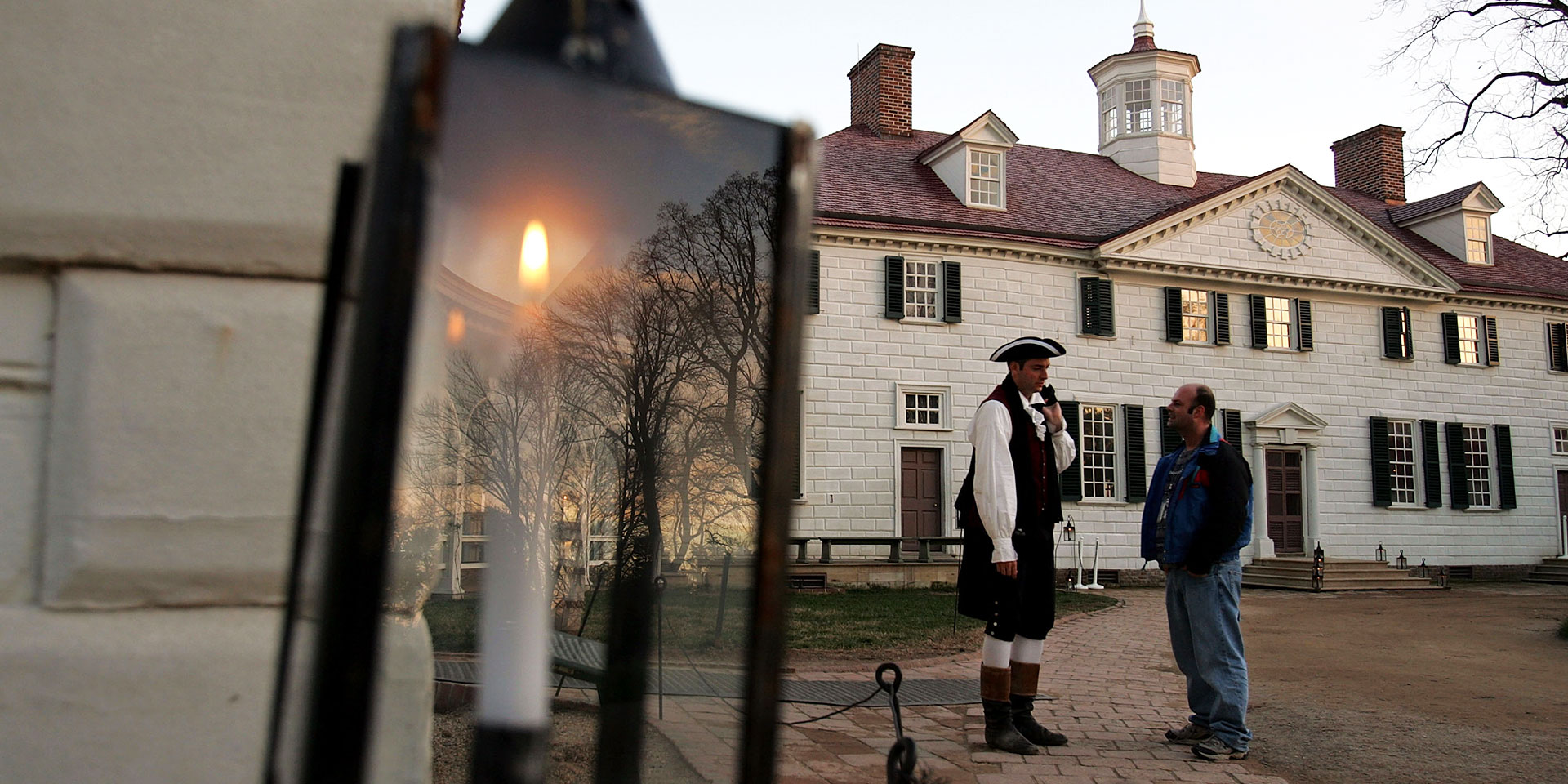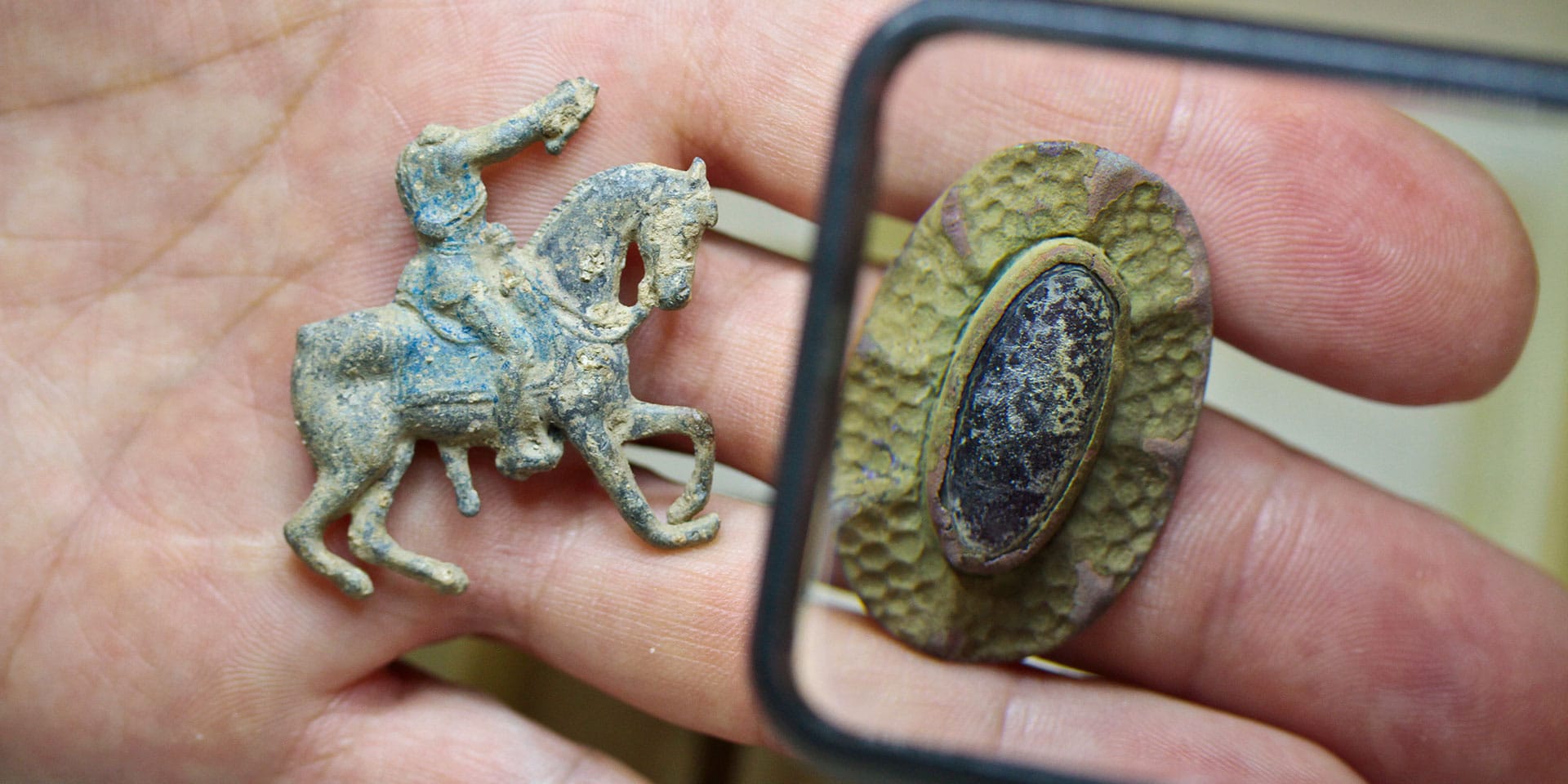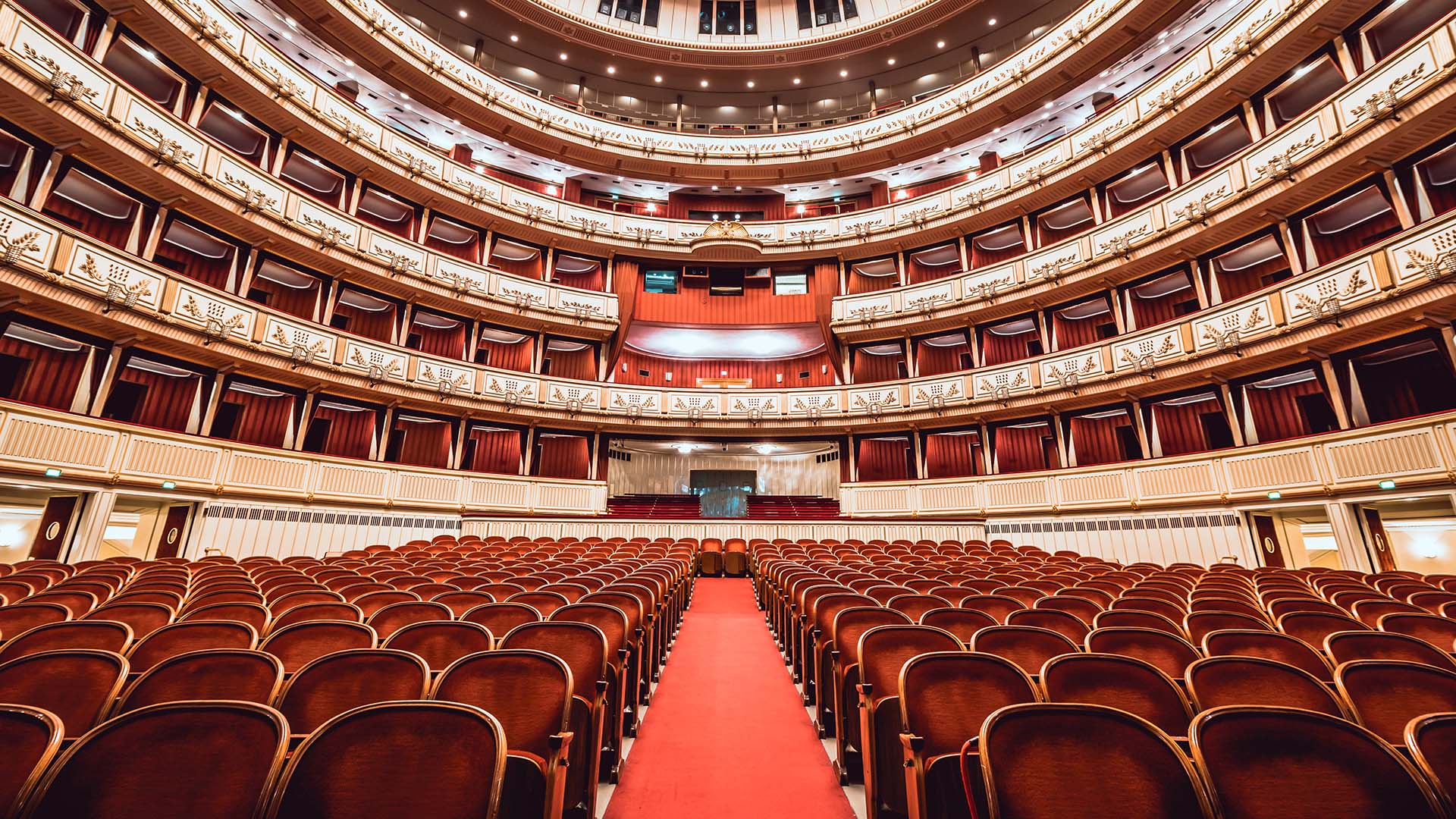
Be sure not to miss the original first lady’s Colonial-era home, Mount Vernon. (Photo: Getty Images)
Culture + StyleHuzzah! Get in with the Old on a Colonial History Tour of Alexandria, Virginia
By Melanie WynneBetween the 1650s and the mid-1700s, British colonists expanded Alexandria, Virginia, from a 700-acre parcel owned by America’s first female attorney, Dame Margaret Brent, to a 6,000-acre settlement for 120 Brits and ultimately into a major plantation center and trading port for tobacco, wheat and corn.
Today, much of Alexandria’s architecture from this booming Colonial period — which ended in 1776 with the signing of the Declaration of Independence — has been carefully preserved, enabling visitors to feel as if they’ve stepped back roughly 300 years in time.
In the historic city center, known as Old Town, brick sidewalks and Georgian-style buildings line streets with names like King, Queen, Duke and Prince, all hearkening back to the Colonial-era reign of Britain’s King George III.
Alexandria Archaeology Museum

Stroll the boardwalk along the Potomac River waterfront, gaze out at the gentle water, and imagine European ships arriving to ferry home valuable crops from a then still-emerging New World.
Inside the waterfront’s Torpedo Factory Arts Center, you can see remains from one of these merchant ships at the small Alexandria Archaeology Museum, along with other 18th-century local finds.
As development along the waterfront unearths long-buried layers of the city, museum archaeologists swoop in to learn all they can about early Alexandria and add to their trove of artifacts. Family Dig Days, held on various dates between June and October, enable you and your kids to help these archaeologists dig for local history and treasure.
The Lyceum
A few blocks away at The Lyceum, you can get a less dirt-packed sense of Alexandria during the 17th and 18th centuries. This imposing Greek Revival mansion wasn’t built until 1839, but the small museum it houses covers much of Alexandria’s local history from the Colonial period onward, including original trade documents.
Souvenirs sold in the museum’s shop include miniature versions of the city’s Colonial-era buildings.
Old Town Tours
To see a more life-size version of Colonial Alexandria, book your spot on one of two Old Town tours. Given annually each April, the American Institute of Architects (AIA)’s Old Town Architecture Tour explores Alexandria homes, churches and businesses that date from the early 18th century through the 1930s.
On Sunday afternoons between March and October, DC By Foot gives their free, two-hour Old Town Alexandria Walking Tour, leaving no cobblestone unturned, from the waterfront to secret-garden courtyards tucked between many Colonial-period homes.
Carlyle House Historic Park
Take an even closer look at domestic Colonial life at Carlyle House Historic Park. This graceful Georgian-style manor house and its brick-paved garden date to 1753, when they were owned by wealthy merchant and landowner John Carlyle, one of the founders of Alexandria.
Tuesday through Sunday, visitors can take a guided tour of the restored manor and a spin through the 3/4-acre garden filled with well-researched plants that would have been used in Carlyle’s day.
Gadsby’s Tavern
Hungry for more Colonial history? Dating to 1770 and still furnished accordingly, Gadsby’s Tavern serves traditional fare from its original heyday, such as peanut soup, fried oysters and beef-and-lamb pye (pie), while actors and musicians perform in Colonial dress.
Stabler-Leadbeater Apothecary Museum
Before dinner or after Sunday brunch at Gadsby’s, visit the nearby Stabler-Leadbeater Apothecary Museum to get a taste of Alexandria’s Colonial-era medicine. A former apothecary that dates to the early 18th century, this fascinating museum explores healing potions concocted for famous locals like first lady Martha Washington.
Mount Vernon
And be sure not to miss the original first lady’s Colonial-era home, Mount Vernon. Martha and her husband George were already two of Alexandria’s most popular residents when they built this sprawling, Palladian-style plantation between 1758 and 1778, about 10 miles from Old Town.
The beautifully preserved site includes a 21-room mansion, a four-acre farm, a whiskey distillery and a museum featuring biographical films and interactive exhibits. Even while he was the nation’s first president, George Washington kept Mount Vernon open for tours — and it can still be toured almost 300 years later, every day of the year.







